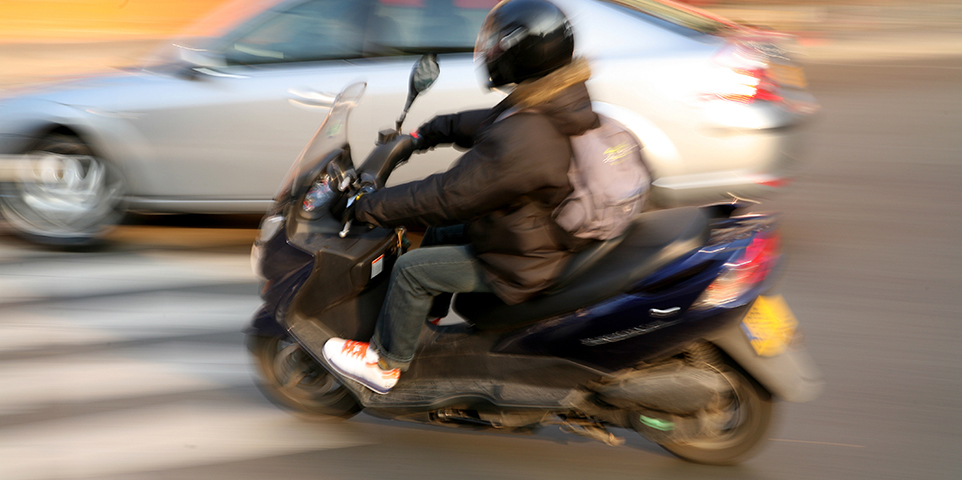MEMBERSHIP
AMPLIFY
EN ESPAÑOL
Connect With Us
- Popular search terms
- Automobile
- Home + Renters
- Claims
- Fraud
- Hurricane
- Popular Topics
- Automobile
- Home + Renters
- The Basics
- Disaster + Preparation
- Life Insurance

Motorcyclists are more vulnerable on the road and are more likely to be injured or killed than car occupants, with a 2019 data comparison showing 29 times more fatalities. Data from that year also indicates that older riders appear to sustain more serious injuries than younger riders, as riders over 50 account for 37 percent of all deaths.
Motorcycle crashes cost billions of dollars per year in direct expenses, such as:
Don’t forget adequate insurance coverage. Visit our page to find out more about finding the right policy for your needs.
|
(1) Based on surveys of motorcyclists using helmets meeting Department of Transportation standards. Surveys conducted in October for 1996-2000 and in June thereafter.
Source: U.S. Department of Transportation, National Occupant Protection Use Survey, National Highway Traffic Safety Administration's National Center for Statistics and Analysis.
|
(1) Due to a vehicle classification change, the 2020 and later year data are not comparable to 2019 and earlier years.
(2) Starting in 2022, motorcyclists exclude people on motorized bicycles.
Source: U.S. Department of Transportation, National Highway Traffic Safety Administration; Federal Highway Administration.
|
(1) NHTSA began using police-reported crash data from the Crash Report Sampling System, replacing the National Automotive Sampling System General Estimates System (GES). NCSA has also changed the methodology of estimating people nonfatally injured in motor vehicle traffic crashes.
(2) Due to a vehicle classification change, the 2020 and later year data are not comparable to 2019 and earlier years.
(3) Starting in 2022, motorcyclists exclude people on motorized bicycles.
Source: U.S. Department of Transportation, National Highway Traffic Safety Administration; Federal Highway Administration.
|
(1) Beginning in 2022, operators and passengers of motorized bicycles are captured as pedalcyclists when involved in a motor vehicle traffic crash.
Source: U.S. Department of Transportation, National Highway Traffic Safety Administration.
|
|||||||||||||||||||||||||||||||||||||||||||||||||||||||||||||||||||||||||||||||||||||||||||
(1) Includes motorcyclists killed on unknown day of week.
(2) Beginning in 2022, operators and passengers of motorized bicycles are captured as pedalcyclists when involved in a motor vehicle traffic crash.
Source: U.S. Department of Transportation, National Highway Safety Administration.
|
(1) Trucks with 10,000 pounds or less gross vehicle weight. Includes pickups, vans, truck-based station wagons and utility vehicles.
(2) Beginning in 2022, operators and passengers of motorized bicycles are captured as pedalcyclists when involved in a motor vehicle traffic crash.
Source: U.S. Department of Transportation, National Highway Traffic Safety Administration.
|
||||||||||||||||||||||||||||||||||||||||||||||||||||||||
(1) Alcohol-impaired driving crashes are crashes that involve at least one driver or a motorcycle operator with a blood alcohol concentration (BAC) of 0.08 grams per deciliter or greater, the legal definition of alcohol-impaired driving.
(2) Beginning in 2022, operators and passengers of motorized bicycles are captured as pedalcyclists when involved in a motor vehicle traffic crash.
Source: U.S. Department of Transportation, National Highway Traffic Safety Administration.
|
|||||||||||||||||||||||||||||||||||||||||||||||||||||||||||||||||||||||||||||||||||||||||||||||||||||||||||||||||||||||||||||||||||||||||||||||||||||||||||||||||||||||||
(1) NHTSA estimates alcohol involvement when alcohol test results are unknown.
(2) Beginning in 2022, operators and passengers of motorized bicycles are captured as pedalcyclists when involved in a motor vehicle traffic crash.
Source: U.S. Department of Transportation, National Highway Traffic Safety Administration.
Insurance Institute for Highway Safety
National Highway Traffic Safety Administration
The Motorcycle Safety Foundation
The Motorcycle Industry Council
Advocates for Highway and Auto Safety
Motorcycle Helmet Use Laws by State
© Insurance Information Institute, Inc. - ALL RIGHTS RESERVED